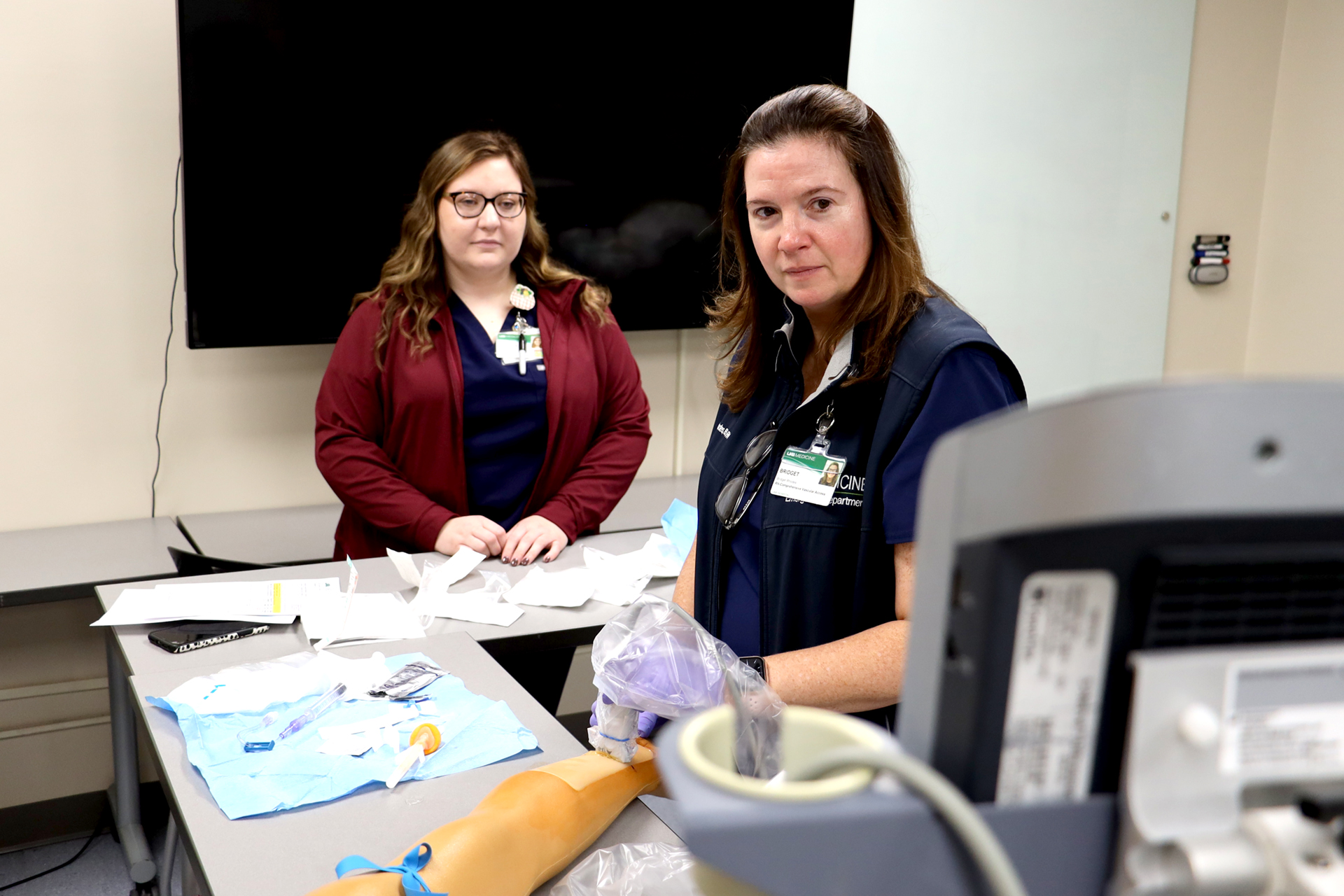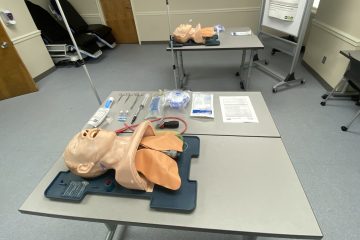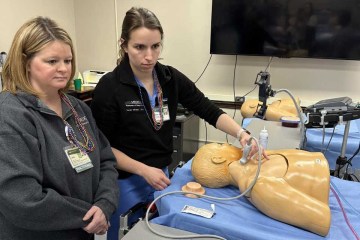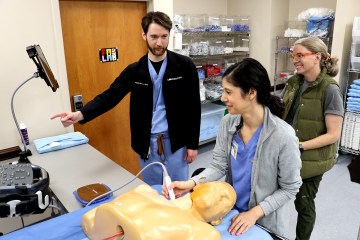Procedural Simulation Program lines up USGPIV sims

Ultrasound guided peripheral intravenous (USGPIV) line insertion is considered beyond basic practice by the Alabama Board of Nursing.
Fortunately, UAB Clinical Simulation offers procedural simulations in that same vein.
Simply put, USGPIV utilizes ultrasound to assist in the insertion of intravenous catheters.
“But for any procedure with this designation, institutions must notify the Alabama Board of Nursing of their plans for initial and ongoing training and maintenance of competency,” said Lisa Bergman, Clinical Simulation’s director of procedural simulation. “At UAB, part of this plan includes a standardized simulation experience facilitated by nurses designated by the Center for Nursing Excellence (CNE).”
One such facilitator is Bridget Rhodes, an R.N. with Legacy of Hope. Rhodes and her facilitator colleagues share a combination of clinical expertise, teaching experience and training with which to use simulation as a teaching tool.
“Learners are educated on technique, vein health and when this new skill is appropriate for peripheral IV insertions,” Rhodes said.
During the simulation, learners receive hands-on training, using actual ultrasound machines and IVs on a trainer or manikin.
The training curriculum itself was collaboratively created through a partnership with Clinical Simulation, CNE and the Comprehensive Vascular Access Team. Clinical Simulation provides logistics support for the simulation experience in the sim lab, such as providing the simulation materials and trainers, and further supports the effort by providing initial sim training and ongoing coaching for designated facilitators, as well as support for simulations held in locations outside of the lab.
No matter the location, the results lean positive.
“Learners have improved their technique with USGPIV insertions, as well as basic peripheral IV insertions with having the knowledge of vein health and when to stick a patient and when it is not appropriate to stick,” Rhodes said. “The learners have definitely improved their technique with sim class practice and real-time sticking while participating in class.”
Ashleigh Lewis and John Carter Burns, both registered nurses in UAB Medicine’s Neuro Intensive Care Unit, completed the program for the second time this past November.
“It was helpful to retake the class and receive tips on how to perfect my technique,” Lewis said.
“I benefited just by getting more practice and applying new techniques,” Burns said, noting that it’ll ultimately help him provide better care for his patients. “I believe it will have a significant impact.”
To learn more about UAB Clinical Simulation’s Procedural Simulation Program, visit here.



0 Comments